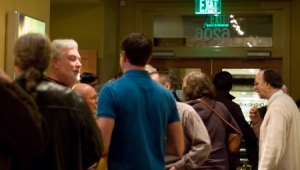| Columns Retired Columns & Blogs |
What The Wire Reveals About Urban Journalism
Lawrence Lanaham goes to Baltimore, Maryland, as well as Bodymore, Murdaland to discover if David Simon's dyspeptic portrait of newspapers in crisis in this season's The Wire is realistic.
Guess what?
The Wire is fiction—and even though Simon was a journalist in Baltimore, his version of what happened then is just one story among many. Not precisely a Stop the presses! moment.
In fact, the biggest reason good fiction like The Wire works so well is that it is selective, sorting through all the facts to give one part of the story its narrative pop.
Good journalism, like Lanaham's, however, can be leisurely in the way it peels back all the layers, attempting to reveal not "just" the facts, but all of their implications. I admire this story's pacing, which admittedly reads better on the page in this month's CJR than it does on their website.
Funny, that. They are the same words, telling the same story, but in print, the slow reveal of layer upon layer is masterful, while online I found myself muttering, "Get on with it."
And that may be the real point of the article: The urban newspaper is ailing because at its best, it's just not how most people these days get information. And, as consolidated media companies respond to that unfortunate bottom line, they become increasingly uninterested in investing in the kind of labor intensive reporting that used to be available only in the papers. Which means that newspapers lose their most distinguishing asset, which means they lose readership, which means the corporations want to cut costs more . . . .
And the beat goes on.
- Log in or register to post comments























